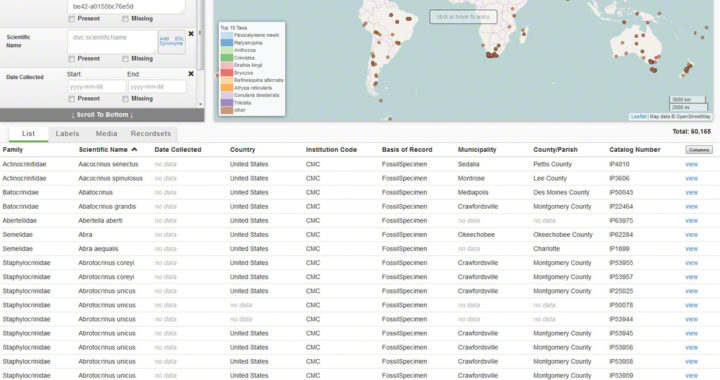On December 21, 2020, Governor Mike DeWine signed Ohio Senate Bill No. 123 into law, thus designating Dunkleosteus terrelli as the Fossil Fish of Ohio. Not every state needs an official fossil fish, of course, but if you had to have one, Dunkleosteus (Dunk–ul–AHS–tee–us) might well be it, and no fish is more deserving when it comes to Ohio.
[READ MORE]Category Archives: Vertebrate paleontology
Digging Dinosaurs!
In order to dig dinosaurs, you must first really dig dinosaurs. That is, like them a lot, because the physical digging/excavating/collecting of dinosaurs is not for the faint-hearted. It’s a grueling, exhausting, painful exercise in self-denial – until such time as the precious fossils are finally secured in the museum collection or exhibit hall.
[READ MORE]Where the “Buffalo” Roam(ed)
In September 2008, CMC excavated modern bison bones (Bison bison) that had recently been discovered in the channel of Big Bone Creek, the shallow stream that traverses the valley containing the lick. Remains of at least five sub-adult animals were collected, as were a dozen Native American stone artifacts found in close association with the bones. The artifacts were identified as expedient butchering tools that had been manufactured on-site from local materials and discarded after use.
[READ MORE]Prehistoric Bison
Two prehistoric bison species became known to science when their fossils were discovered in Boone County, Kentucky, home of the Cincinnati/Northern Kentucky International Airport and just down I-71/75 from Cincinnati. The Giant Bison, Bison latifrons, was identified from a skull fragment found around 1800 in the bed of a stream, likely either Gunpowder or Woolper Creek.
[READ MORE]That can’t be good! (for a fossil)
Why then would anyone want to damage a fossil bone by removing a section of it with a power drill? Surely this must be a wanton act of vandalism! Read our latest blog entry to learn why museums sometimes have to break a few eggs to make an omelet and drill a few bones to make a discovery.
[READ MORE]The (Ancient) World Comes to Cincy!
These are strange times, indeed, what with much of the world on lockdown due to pandemic. However, time and events march on and there is perhaps cause to be optimistic for better times returning in the fall.
[READ MORE]Waltzing Matildasaurus!
OK, so there is no such thing as Matildasaurus, but there is a Muttaburrasaurus, an Early Cretaceous ornithopod dinosaur from northeastern Australia. Paleontology is not the world’s most lucrative profession, but it does have its advantages, often including the ability to travel for work. During this period of Covid-19 quarantine for so many of us, it seems like an opportune time to relive a paleo-adventure and share a little virtual travel Down Under.
[READ MORE]Long live the extinct mastodon!
The American mastodon (Mammut americanum) is the iconic “Ice Age” creature of the Pleistocene epoch (2.58 million to 11,700 years ago) for North America, and an example of its extinct megafauna.
[READ MORE]A Museum Without Walls: Technical Aspects
In an earlier post, we announced the sharing of over 60,000 of Museum Center’s Invertebrate Paleontology records to the global iDigBio website and explained how this benefits the scientific community. But, how does this actually happen? What steps are involved to place our records on an international research platform?
[READ MORE]









